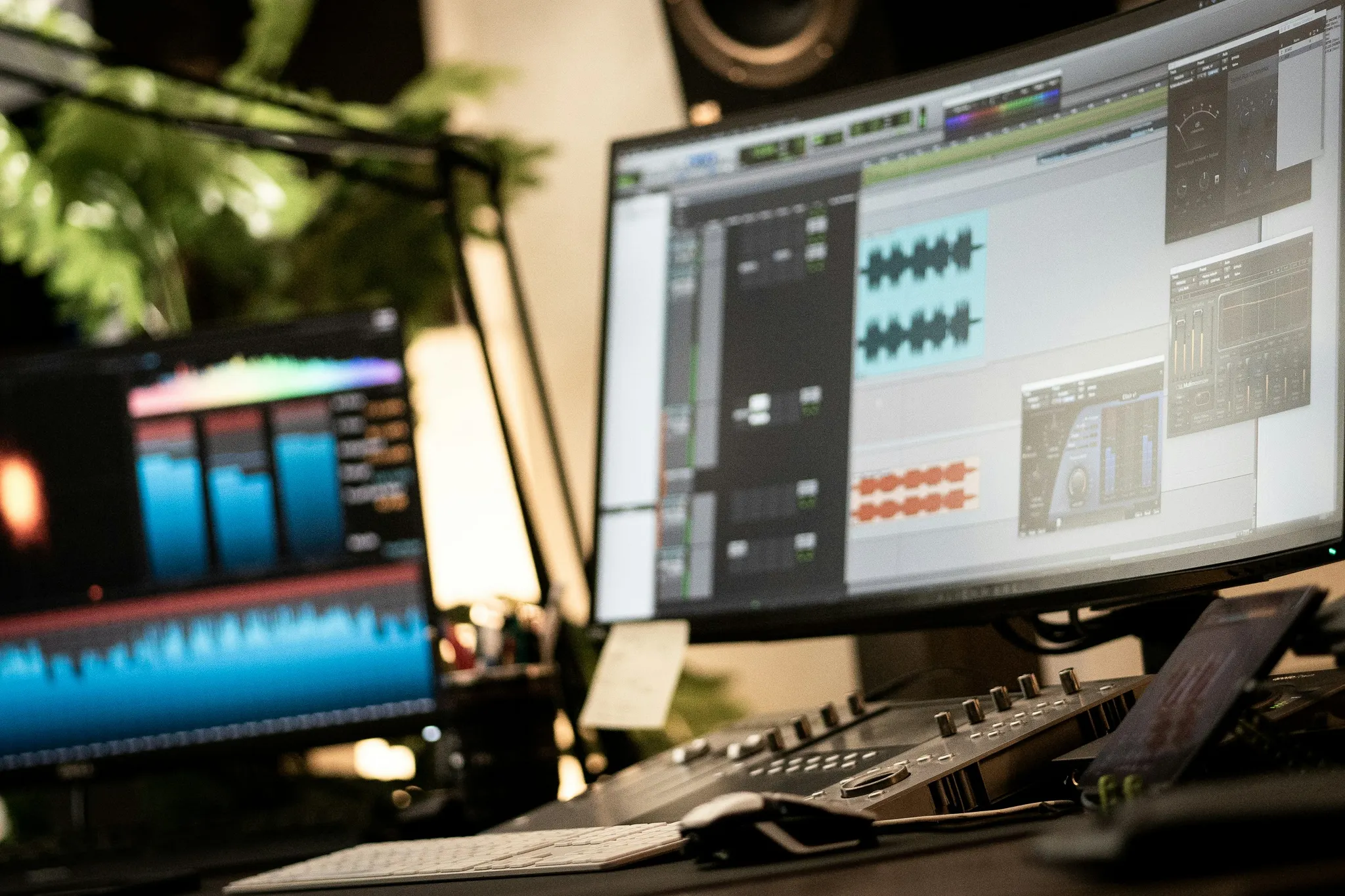
The Ultimate Guide to Distributing and Promoting Your Music on Streaming Platforms as an Independent Artist
In the ever-evolving music industry, independent artists face unique challenges in getting their music heard. With the rise of streaming platforms, artists now have the opportunity to reach a global audience without the need for a record label. However, navigating the world of digital distribution and promotion can be daunting. This comprehensive guide will empower independent artists with the knowledge and strategies to effectively distribute and promote their music on streaming platforms, maximizing their reach and potential for success. From selecting the right distribution platform to leveraging social media and playlisting, we'll cover all the essential steps to ensure your music reaches its target audience and generates revenue.
Choose the right distribution platform
In the realm of music distribution, choosing the right platform is paramount to an independent artist's success. With a plethora of options available, each with its own set of features, costs, and reach, navigating this landscape can be overwhelming. However, by carefully considering a few key factors, artists can make an informed decision that aligns with their goals and needs.
One crucial aspect to evaluate is the platform's reach and potential audience. Consider the platform's user base, geographical coverage, and the genres it specializes in. A platform with a vast and diverse user base increases the chances of your music being discovered by new listeners. Additionally, assess the platform's compatibility with your target audience. For instance, if your music caters to a niche genre, choosing a platform that caters specifically to that genre could be advantageous.
Cost is another significant factor to take into account. Distribution platforms typically charge a fee for their services, either as a one-time payment or a recurring subscription. Compare the pricing plans of different platforms and opt for the one that offers the best value for your budget. Be sure to consider any additional costs, such as charges for uploading music, setting up a profile, or accessing analytics.
Finally, consider the user-friendliness and ease of use of the platform. A user-friendly interface simplifies the process of uploading music, managing your artist profile, and tracking your progress. Look for platforms that provide clear instructions, comprehensive support, and efficient customer service. Reading reviews and testimonials from other artists who have used the platform can provide valuable insights into its reliability and effectiveness.
By meticulously evaluating these factors, independent artists can select the right distribution platform that caters to their specific needs, maximizes their reach, and sets the stage for successful music distribution and promotion.
Prepare your music for distribution
This section will provide you with the information you need to prepare your music for distribution on streaming platforms. We will cover everything from making sure your music meets the technical requirements of the platform to creating high-quality cover art and writing an engaging artist bio.
First, you need to ensure that your music meets the technical requirements of the streaming platform you plan to distribute it on. This includes the file format, bitrate, and sample rate. You can find the specific requirements for each platform on their website.
Next, you need to create high-quality cover art for your music. The cover art is the first thing people will see when they come across your music, so it's essential to make a good impression. Make sure the cover art is visually appealing and relevant to your music.
Finally, you need to write an engaging artist bio. The artist bio is a short paragraph that tells people about you and your music. It's an opportunity to connect with your audience and make them interested in your music. Make sure the artist bio is well-written and free of typos.
Once you have prepared your music, cover art, and artist bio, you can start distributing your music on streaming platforms.
Set your release date and promotion strategy
Setting a release date and creating a promotion strategy are crucial steps for independent artists to ensure the successful distribution of their music on streaming platforms. Researching and identifying your target audience is paramount to tailoring your promotional efforts effectively. Analyze demographic data, music preferences, and online behavior to gain insights into your audience's needs and interests. Use this knowledge to craft targeted messages and select appropriate platforms for your promotion.
Creating a promotional calendar and plan is essential for maintaining consistency and building anticipation around your music release. Plan promotional activities such as social media posts, blog features, and influencer collaborations well in advance. Develop a detailed timeline that outlines each activity, including the platform, content, and target audience. This organized approach will ensure a cohesive and impactful promotion strategy.
Collaborating with other artists and industry professionals can significantly amplify your reach and engagement. Partner with fellow musicians, producers, or influencers who share a similar audience to cross-promote each other's music. Engage in joint social media campaigns, share each other's content, and consider organizing live performances or virtual events together. These collaborations not only expand your audience but also foster a sense of community and support within the music industry.
Engaging with your fans and followers on social media is vital for building a loyal and interactive community. Regularly share updates about your music, behind-the-scenes glimpses, and personal anecdotes to connect with your audience on a deeper level. Respond to comments, messages, and mentions promptly to demonstrate your appreciation and encourage ongoing engagement. Utilize social media to host interactive sessions such as Q&A, live performances, or giveaways to further enhance fan engagement and excitement.
Remember, a successful music release strategy requires strategic planning, consistency, and continuous engagement with your audience. By setting a well-defined release date and implementing a comprehensive promotion plan, independent artists can maximize their chances of success in the competitive music industry.
Maximize your reach with playlisting and social media
As an independent artist, you can use social media to connect with fans, build a community around your music, and get your music heard by more people. Here are some tips for using social media effectively:
- Use high-quality images and videos to capture attention and create a visually appealing profile.
- Write engaging captions that tell a story and connect with your audience on a personal level.
- Use relevant hashtags to reach a wider audience and get your music discovered.
- Interact with your fans by responding to comments and messages, running contests and giveaways, and hosting live Q&A sessions.
- Use social media to share your music, news, and upcoming shows.
- Collaborate with other artists and industry professionals to expand your reach and get your music heard by a wider audience.
- Use social media analytics to track your progress and measure your success.
In addition to social media, you can also use playlisting to maximize your reach as an independent artist. Playlisting is a great way to get your music heard by new listeners and get your music added to popular playlists can significantly increase your streams and followers. Here are some tips for getting your music added to playlists:
- Research and identify relevant playlists that your music would be a good fit for.
- Create a high-quality pitch that includes a link to your music, a brief description of your music, and why you think it would be a good fit for the playlist.
- Personalize your pitch to each playlist curator and make sure to follow their submission guidelines.
- Follow up with playlist curators after submitting your music and thank them for their time.
- Use social media to promote your music and encourage your fans to listen to your music and add it to their playlists.
Monetize your music and track your progress
To monetize your music on streaming platforms, you'll need to enable monetization in your account settings. Once enabled, you'll start earning royalties every time your music is streamed. The amount you earn per stream varies depending on the platform, your contract, and other factors.
In addition to streaming royalties, you can also earn money from downloads, sync licensing, and physical sales. To maximize your earnings, it's important to have a presence on all major streaming platforms and to actively promote your music.
To track your progress, you can use the analytics tools provided by each streaming platform. These tools will show you how many streams your music is getting, where your listeners are located, and other valuable information. You can also use third-party analytics tools to get more detailed insights into your music's performance.
Another important way to track your progress is to join a music rights organization (MRO). MROs collect and distribute royalties for public performances and broadcasts of your music. By joining an MRO, you can ensure that you're receiving all of the royalties that you're owed.
By following these tips, you can monetize your music and track your progress as an independent artist. With hard work and dedication, you can achieve your musical goals and build a successful career in the music industry.



